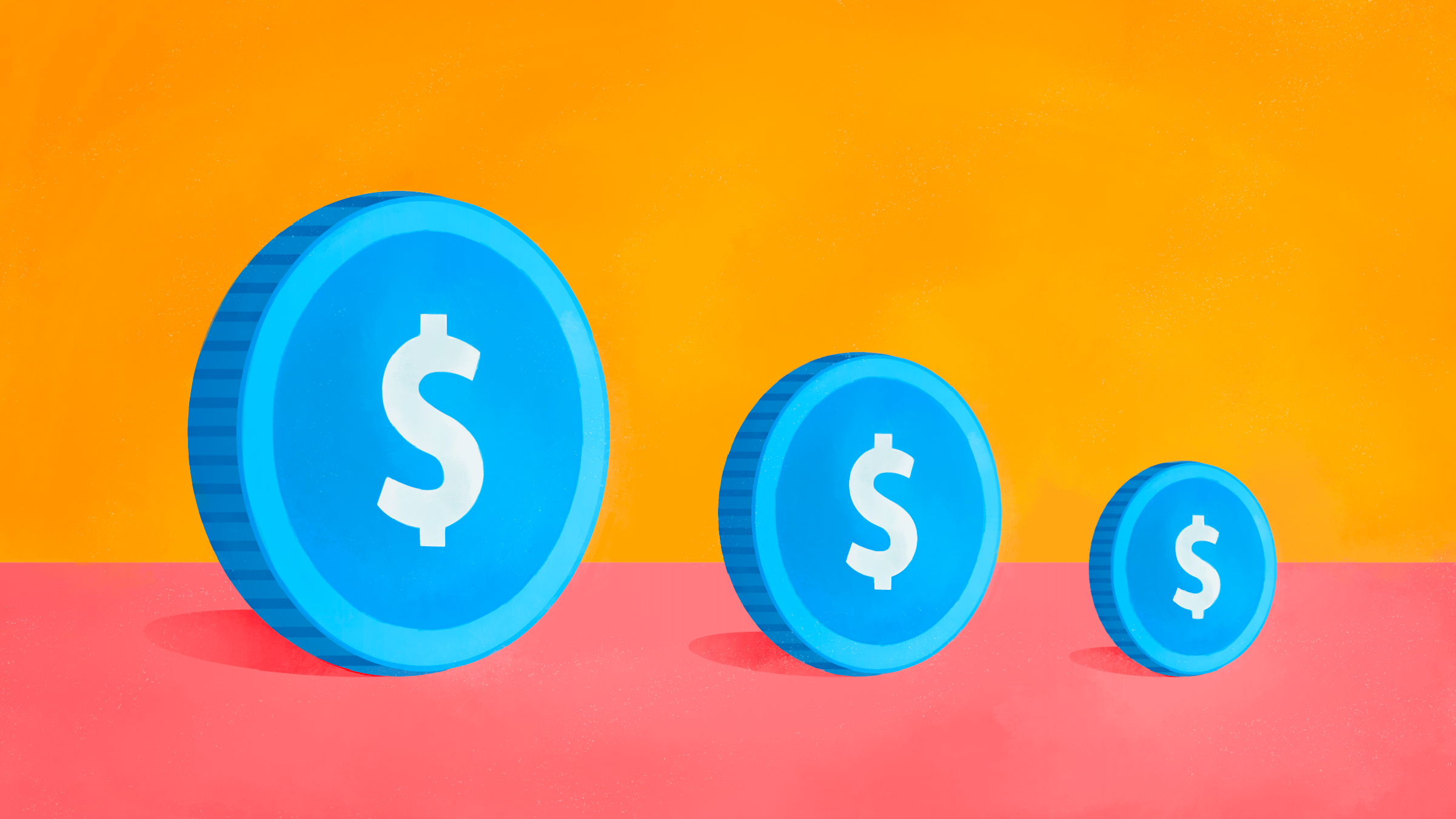:quality(80)/cloudfront-us-east-1.images.arcpublishing.com/morningstar/6ZMXY4RCRNEADPDWYQVTTWALWM.jpg)
The Big Picture
This column contains my favorite investment chart. It depicts: 1) the earnings yield on large-company U.S. equities with 2) the yield on 10-year Treasury notes. To be sure, the two figures are not fully comparable. Companies rarely distribute their entire proceeds while Treasuries always do. When businesses generate high returns on their reinvested cash, this difference benefits equities. However, when they squander their assets, the advantage swings to Treasuries.
Repayment risk also cuts both ways. Treasuries have none, as (the cliché goes) the government owns the printing presses. Naturally, that safety is a virtue. On the other hand, no amount of good news will improve Treasury payouts. In contrast, companies can substantially increase their profits. Never mind technology stocks. Over the past decade, even such unglamorous firms as Caterpillar CAT, United Parcel Service UPS, and Lowe’s Companies LOW have more than doubled their per-share earnings.
In short, while companies can and do destroy shareholder value, either because of mismanagement or adverse economic tides, they compensate by providing opportunity. That seems like a fair trade. Over history, one might think, the earnings yield on equities has roughly matched the yield on 10-year Treasuries.
Let’s see if that has been the case since 1946. (All amounts are derived from year-end numbers, aside from 2023, which features an earnings yield computed on June 30 reports and the Dec. 6 closing Treasury quote.)
Earnings Yields and Treasury Yields
(Large-company stocks and 10-year Treasuries, 1946-2023)
:quality(80)/cloudfront-us-east-1.images.arcpublishing.com/morningstar/OLFZ7KTGA5GBJGYSJANHWBQG6I.png)
The pattern, it must be confessed, is unstable. That said, the chart does contain three reasonably distinct subsections:
1) Higher Earnings Yields, Part 1 (1946–67)
2) Moving in Tandem (1968–2008)
3) Higher Earnings Yields, Part 2 (2009–22)
Higher Earnings Yields, Part 1 (1946–67)
As the Chinese say, this era leaves me between laughter and tears.
The laughter comes from the initial disparity. In 1948, investors accepted a 1.6% yield on 10-year Treasury notes, while requiring a whopping 15.1% earnings for U.S. equities. (To restate the latter in more familiar terms, their stocks sold for 6.6 times that year’s earnings.) Strangely, the inflation rate that year was 7.7%. One would have thought that if Treasury buyers were to endure such a low payout, they would only have done so when high inflation was a distant memory.
Perhaps my amusement is unfair; after all, those investors had recently suffered through the Great Depression, which taught them the hard way that corporate earnings can fall as well as rise. But there is such a thing as overdoing caution, and demanding an earnings yield 9 times higher than the Treasury rate would seem to fit that description. Also, equity shareholders were at their most bearish precisely when U.S. business prospects were at their brightest. Ah, the irony.
I shed metaphorical tears for the missed opportunity. Aside from Taylor Larimore, whom I hope is reading this article and still in good health, none of us were around to seize 1948′s moment. Nor are we likely to experience such conditions. Over the succeeding 75 years, stock investing has become more mainstream, thereby increasing equity valuations. If stocks ever again become so cheap, the economic news almost certainly will be dire.
It is for this reason that investment researchers routinely expect future equity returns to trail those of the past. The S&P 500′s average annualized gain over the past 75 years has been 11.5%. Great! Should stocks once again boast a 15% earnings yield, they might once again provide that return. Since they do not sell at that price, though, best to shave that estimate. (This January, the long-term forecasts for large-company U.S. stocks averaged about 7%.)
Moving in Tandem (1968–2007)
The lines crossed in 1968, when 10-year Treasuries finished the year at 5.5%, with the earnings yield for equities registering 5.4%. The convergence owed to two factors. First, stock prices had risen because equities had become less frightening. Second, inflation was percolating. Through the ‘50s and early ‘60s, price hikes were largely dormant. By 1968, though, inflation had increased for four straight years, with two more years (as it turned out) to follow. To ensure that their real returns would be positive, bond investors demanded larger payouts.
Not large enough, as it turned out. After a two-year respite, inflation surged even further in 1973, courtesy of the oil crisis. It would not recede until the early 1980s. Spiraling prices aligned stocks and bonds. When inflation pressures eased, they each rallied; and when pressures intensified, they each declined.
During this era, investments traded according to my initial hypothesis. Treasury yields typically exceeded those of equities, but not greatly. To the first degree of accuracy, investors did believe that stocks’ potential rewards approximately offset their risks. Consequently, earnings yields and Treasury yields were largely alike.
Higher Earnings Yields, Part 2 (2009-22)
After 40 years of harmony, the two asset classes parted ways. Tumbling equity prices induced by the global financial crisis combined with a bond market rally pushed earnings yields once again above Treasury payouts. As during the mid-20th century, the earnings yields on stocks exceeded 10-year Treasury payouts, and for the same reason as before: a recent stock market crash.
The outcome was similar, too. Stocks thrashed bonds. In the ‘50s, large-company U.S. stocks appreciated by 19% (!) annually, with 10-year Treasuries barely cracking 1%. The result was closer during the 2010s because the yield gap between the two investments was smaller than during the late ‘40s, but the contest remained one-sided. Stocks gained an annualized 13.5%, and 10-year Treasuries managed 4.5%, which made for cumulative totals of 225% versus 55%.
Next Steps
Which brings us to today. For the first time in 14 years, the yield on 10-year Treasuries has surpassed the earnings yields on equities. That achievement puts Treasury notes back on the investment table. When the payouts on 10-year Treasuries sharply trailed earnings yields, cash was the most prudent risk-free option. Now, intermediate- and long-term securities provide real competition.
Whether 10-year Treasuries’ current 4.2% yield makes them more attractive than equities is another matter. The answer to that question will depend, in large part, on the level of future inflation. My next column will address that topic.






:quality(80)/cloudfront-us-east-1.images.arcpublishing.com/morningstar/54RIEB5NTVG73FNGCTH6TGQMWU.png)


:quality(80)/cloudfront-us-east-1.images.arcpublishing.com/morningstar/VYKWT2BHIZFVLEWUKAUIBGNAH4.jpg)










